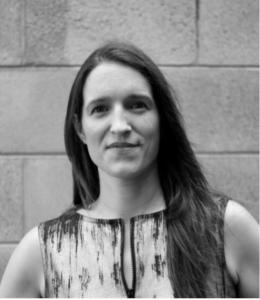
Dr Raewyn Martyn
Heritage Collections Research Fellow, November 2024 - April 2025
Home institution: University of Canterbury
Raewyn Martyn is an artist from Aotearoa New Zealand, currently a lecturer and researcher in Fine Arts at University of Canterbury in Ōtautahi Christchurch. Her family arrived in Aotearoa during the 1860s, from the north and west of Scotland, Cornwall, and Ireland. Raewyn’s exhibition practice involves gallery and site-based work made in Aotearoa and internationally. Her site-responsive paintings and installations are composed during attentive occupation of sites or situations. She likes to think about the histories and futures of the places and sites where painting happens, and also how paintings can change through time, challenging the stability and temporality of painted surface, medium, and site. Recent work involves cellulose-based paint that can rehydrate, and materials like bacterial polyester—a biopolymer that has capacity for ‘shape memory’, reconfiguring to past forms when triggered by heat.
Raewyn studied toward an MFA in Painting and Printmaking at VCUArts in Richmond VA. (2011-2013), and then worked as an assistant professor of visual arts at Antioch College in Ohio (2013-2016). She was a research participant at the Jan van Eyck Academy in the Netherlands (2016-2017) and completed a practice-based PhD at Toi Rāuwharangi College of Creative Arts, Massey University (2023).
Project title: Shape Memories
Raewyn will be in residence at the Newington offices of IASH between November 15th 2024 and January 31st 2025, returning later in 2025 to present artwork. During the IASH Fellowship she will work with Edinburgh GeoSciences researchers Rachel Wood and Andrew Curtis, in conversation with Geological Collections Curator Gillian McCay and Art Historian Andrew Patrizio.
This collaboration will generate new process-based artworks that explore ideas of uncertainty and unconformity in the study of geology and its larger cultural and ecological contexts. These artworks will also respond to the lived environment of the GeoSciences buildings.
Like many buildings of their age in Edinburgh, the Sciences buildings are constructed of sandstone that results from ancient interellated biological and geological processes. In their contemporary state, these stone structures continue to host a range of active processes including the accumulation of biofilms, lichens, and moss, encouraged by various forms of precipitation and human-made water flows. The edges, surfaces, and porous bulk of their stonework continues to change as the uncertain present carves a future from an unknown past.
The Geological Models Collection at University of Edinburgh presents a range of attempts at gaining and calibrating theoretical knowledge, giving material form to geological theories that necessarily embrace elements of uncertainty. Close study of this collection will inform the development of our IASH project over the months to come.
